The strawberry is a cultivated plant from a crossbreeding between two species of wild strawberries. The accidental hybridization occurred when European explorers crossed the Chilean and American wild strawberry varieties. Despite its accidental origins, the strawberry quickly gained popularity for its sweet taste and is now one of the most beloved fruits worldwide.
Strawberries are easily accessible and come in nearly 2,000 different varieties, each with its unique taste, appearance, and fragrance. The most widely enjoyed type of strawberry is typically cultivated in temperate climates.
Strawberries are known for their strong fragrance, shaped like a cone or heart, vibrant red color, shiny skin, sturdy green stem, and tart taste. They grow on short stems and have glossy leaves. The strawberry plant produces small white flowers with a yellow center. Once these flowers are pollinated, they transform into delicious fruits that are covered in numerous tiny seeds.
Strawberries are delicious fruits that can be enjoyed in their natural state. They pose no harm to humans as all parts of the plant are safe for consumption. Even the leaves are suitable for consumption. Devotees of herbalism and herbology will prepare an antioxidant-rich infusion that is also excellent with the addition of ripe fruit.
Strawberry is also a safe fruit for dogs. Dogs can eat strawberries but in appropriate quantities. These fruits should not be the main component of a dog's diet but a supplement. Feeding your dog excessive amounts of fruit can result in stomach issues. It's also important to be aware of potential allergic reactions.
When giving strawberries to your dog, it is best to offer them raw and without the seeds or skin. You can give your dog the whole strawberry or cut it into smaller pieces. Adding a small amount of strawberry puree to properly balanced wet dog food can provide added vitamins and moisture to their meal.
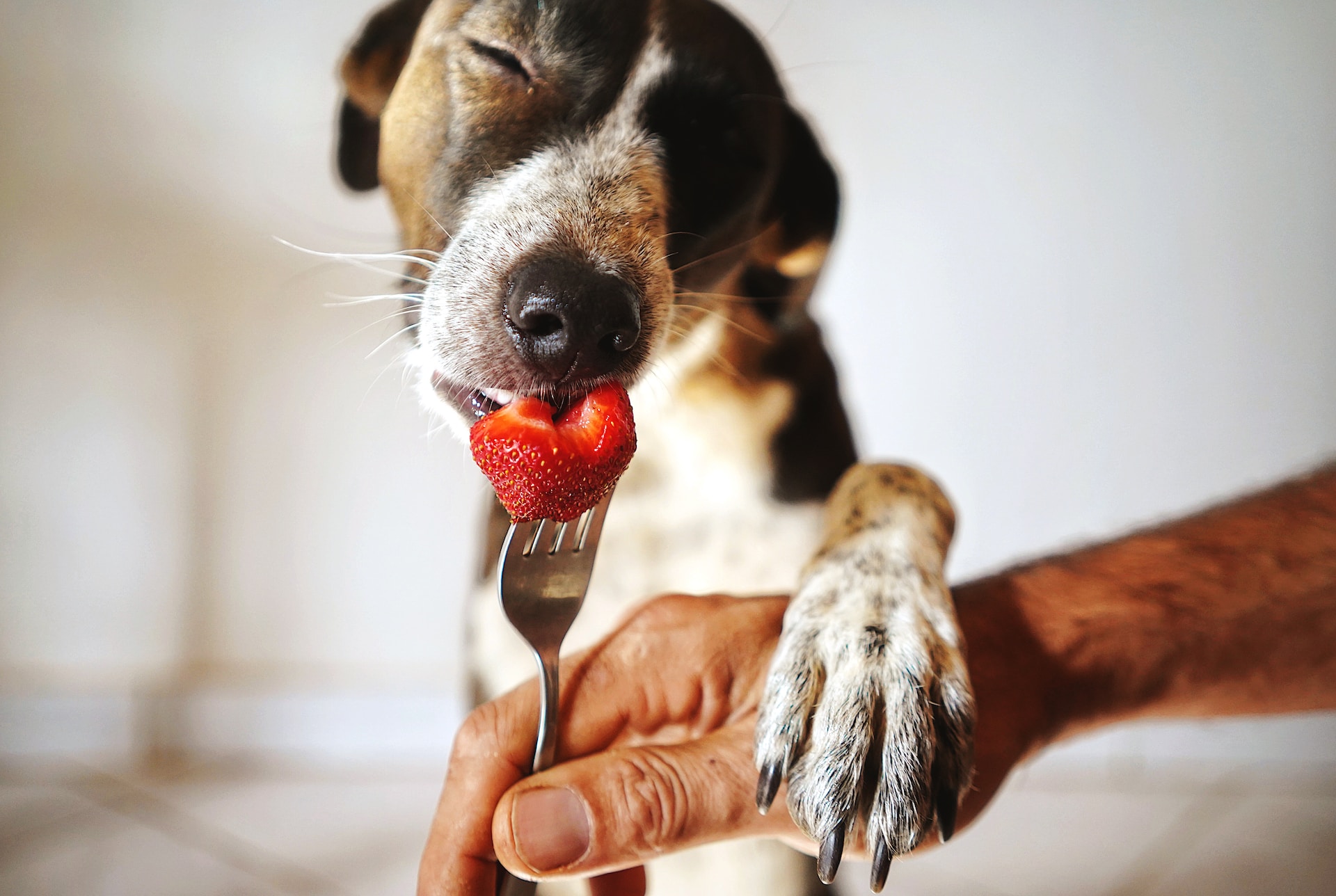
The advantage is a vast number of varieties of strawberries, which differ not only in taste but also in the period of ripening or juiciness of the flesh. So, what is the best type of strawberry? The following varieties are the most popular:
Honeoye – This is a very distinctive, flavorful variety of strawberry. They are large, cone-shaped, with a red color with a sheen. Growers also value it, as its fruits stand up well to transportation. The fruit bushes are resistant to diseases and frost. Growing it on land where strawberries or other fruits were previously grown is not recommended.
Kent – Kent strawberries are a popular, early variety known for their sweetness. These delicious berries are large, juicy, and have a vibrant red color that gives them an enticing shine. Whether enjoyed fresh or made into preserves, the taste is absolutely delightful. Additionally, Kent strawberries have excellent transportation and storage capabilities. The bushes themselves are resistant to frost and disease, while the blossoms can withstand spring frosts without damage.
Christine – Introducing Christine, a new and early variety of strawberry. These strawberries are known for their abundant yield right from the start, allowing the season to kick off with a bang. Not only are they incredibly juicy, but they also possess a delicate and delightful taste. In addition, this particular type of strawberry boasts resistance against both diseases and frost.
Pineberry – This is an unusual variety of strawberry, which attracts attention with its extraordinary taste and color. They are distinguished by their white color and red seeds. It tastes different from other varieties. It has an aftertaste of pineapple. The size of strawberries is quite large. Their cultivation is as simple as other varieties of strawberries. In addition, it reproduces very quickly, so we do not need to buy a lot of cuttings.

Growing strawberries can require varying conditions depending on the specific type of fruit being grown. However, in general, they are relatively easy to cultivate and can even be planted in a pot. It's no wonder that strawberries are among the most commonly cultivated berry plants in home gardens. So how can you ensure a bountiful harvest of strawberries?
Location – When growing strawberries for personal use, you have multiple options for the location. You can plant them traditionally in rows or select specific spots throughout your garden. Additionally, it has become popular to grow climbing varieties in hanging pots. However, if you choose to cultivate strawberries in pots, it is important to consider the frequency of visits to your plot. Neglecting regular watering may cause the root ball to dry out and lead to irreversible physiological damage.
Soil – For strawberries to thrive, they require a sunny and wind-sheltered environment. Ample sunlight not only impacts the size of the fruit but also enhances its visual appearance. The best soil for cultivation is fertile, humus, rich in nutrients, and at the same time permeable. The optimal soil reaction is slightly acidic. A universal peat substrate should be mixed with garden soil and sand for container cultivation. At the bottom, it is worth to pour drainage. In ground cultivation, before planting strawberries, it is recommended to sow a forecrop.
Timing – Strawberries can be planted in spring or summer. Plants then are dug up in autumn and can be stored in a cold store over the winter. Autumn planting is better avoided; frosts and later frosts can damage herbaceous perennials. Strawberries, depending on the type, can have different ripening times. Some varieties develop quickly after planting, yielding in as little as 8-10 weeks.
Temperature – Strawberries are usually resilient to low temperatures, with the ability to withstand as low as -15 °C/5 °F. However, extremely cold temperatures can still pose a risk to strawberry plantations.
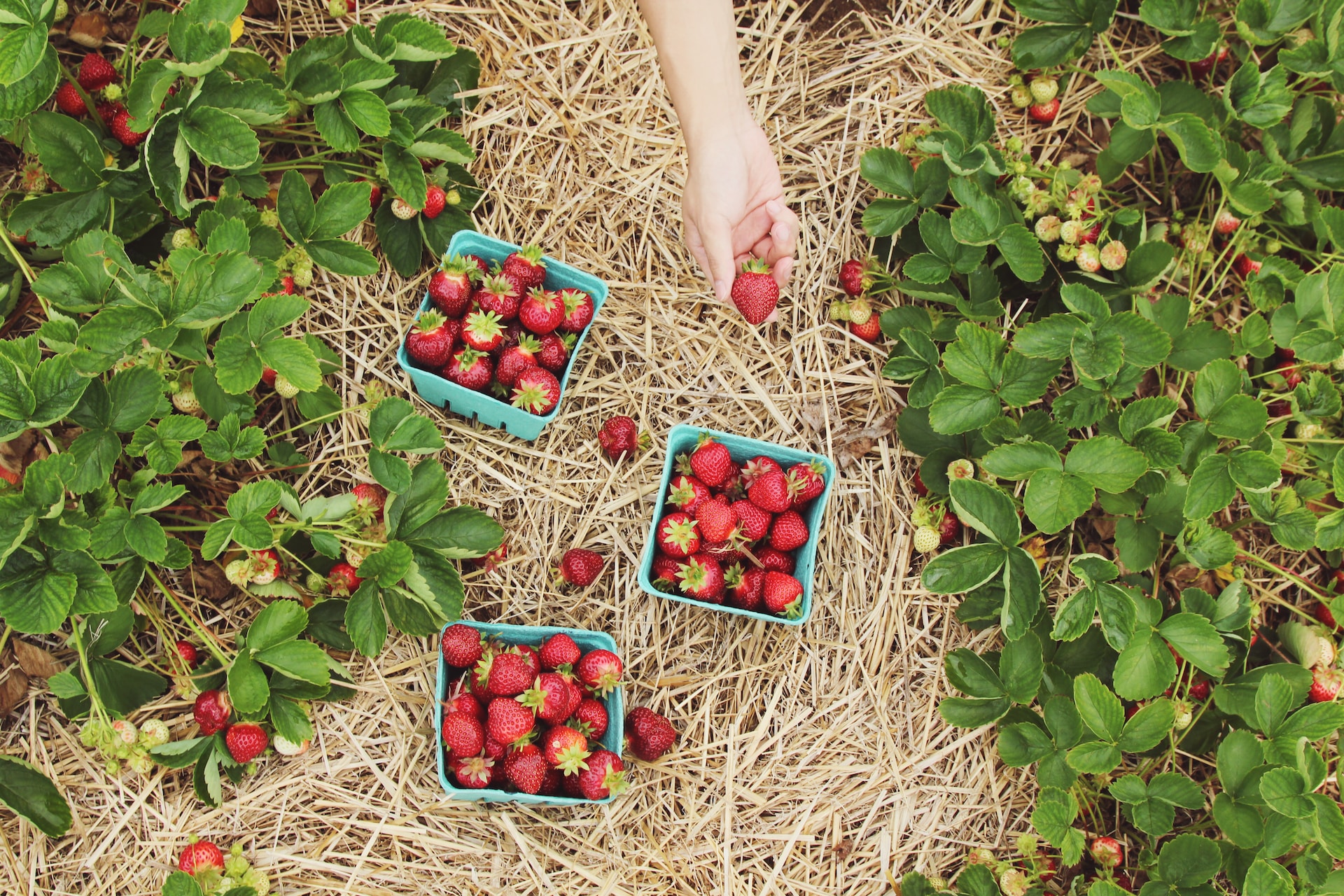
Watering – It's important to keep the soil slightly moist for strawberries, but be careful not to overwater and make it too wet. Water should be directed near the roots using methods like drip irrigation or a watering can without a filter. Avoid frequent sprinkling of leaves, flowers, and fruit as it can increase the risk of fungal diseases. During dry periods, strawberries will need more watering. If you have strawberries in containers during summer, they may need to be watered several times a week.
Harvesting – When it comes to harvesting strawberries, we take care to use clean containers that are suitable for transportation. In these containers, we make sure to arrange the fruits in a way that minimizes damage or crumpling, ideally keeping each layer no higher than 10 cm. One great option for collecting strawberries is lupines.
Fertilization – To maintain the health of strawberries, it is crucial to combat weed growth. This can be achieved by using organic or synthetic mulch. Strawberries grown in nutrient-rich soil typically do not require heavy fertilization. There are various types of fertilizers available for strawberry cultivation, including specialized options designed specifically for strawberries. Additionally, humic fertilizers have shown promising results. When selecting a fertilizer product, it is important to consider the nutrient content and ensure that it fulfills the plant's essential requirements.
Problems – Here are some steps you can take to protect your seedlings from pests: after harvesting, make sure to trim the leaves. Additionally, it's advisable to use fungicides and insecticides preventively. In amateur gardening, consider using eco-friendly solutions instead. Crops need to be protected from pathogens that cause, among others, gray mold, fruit leathery rot, and strawberry verticilliosis.

Strawberries are healthy, tasty fruits. Eating them is a pleasure for the palate and a shot of health for the whole body. Every year, they satisfy us with their taste, so it is worth taking advantage of their properties. Strawberries are a nutritious fruit that provides a wealth of essential nutrients without adding many calories to your diet. They have a high nutrient density, meaning they offer numerous valuable nutrients while being low in energy. Some of the key nutrients found in strawberries include:
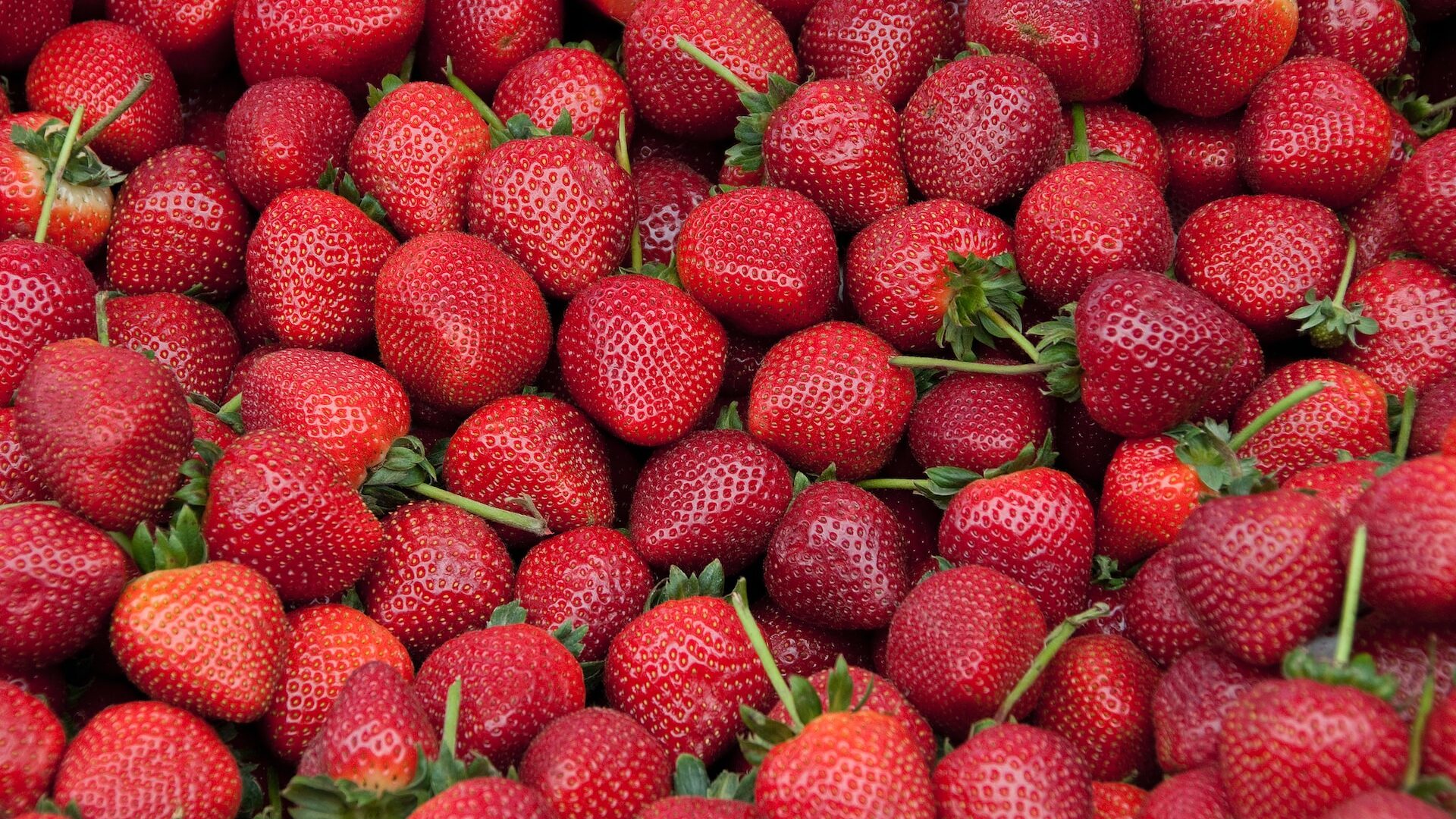
Vitamin A – Vitamin A is crucial for maintaining good vision, boosting the immune system, and potentially preventing cancer. It also has benefits for skin health. Strawberries are a great source of vitamin A, making them a worthwhile addition to your diet.
Vitamin B – Strawberries are not only delicious but also packed with essential B vitamins. They contain a good amount of B1, B2, B3, and B6 vitamins, which play a crucial role in supporting the health of our nervous system. Furthermore, the high levels of vitamin B6 found in strawberries contribute to maintaining healthy hair, skin, and nails.
Vitamin C – Strawberries are rich in vitamin C, containing even more than oranges and other citrus fruits. Vitamin C is an important antioxidant that helps protect cells from damage caused by free radicals. It also boosts immune function and aids in the absorption of iron.
Vitamin E – Vitamin E, found in strawberries, plays a role in protecting cells from oxidative stress. This antioxidant helps slow down the aging process while providing nourishment, moisture, regeneration, and hydration to the skin. Additionally, vitamin E has a beneficial impact on cholesterol levels.
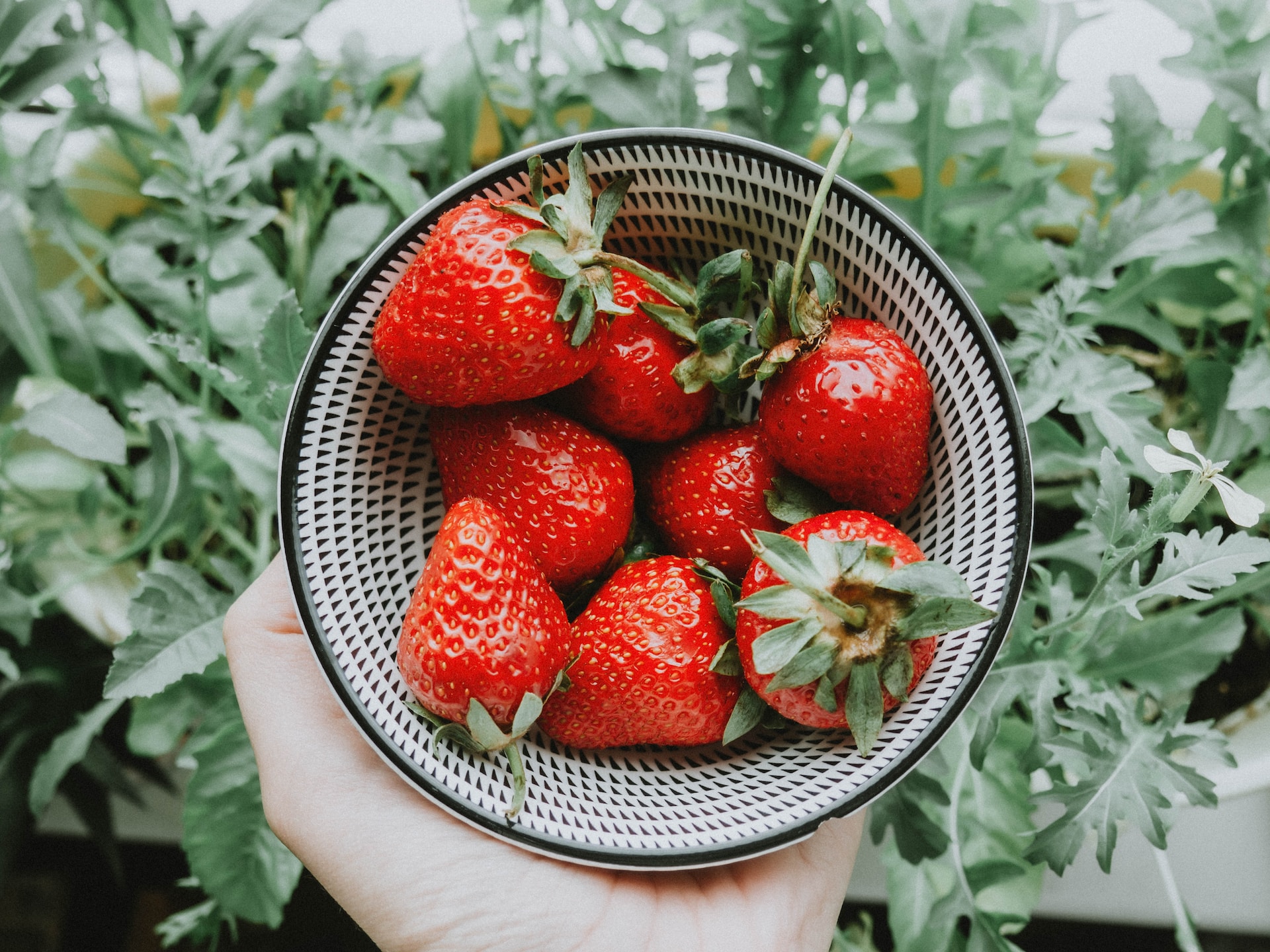
Potassium – Potassium is an essential nutrient found in strawberries. It plays a crucial role in the proper functioning of both the nervous and muscular systems. Studies have shown that maintaining adequate levels of potassium in the body can help reduce blood pressure, improve vascular endothelial function, and lower the production of harmful free radicals, ultimately reducing the risk of stroke.
Iron – Strawberries are a good source of iron, which is important for the body's ability to transport oxygen to cells. It also helps in absorbing iron from other foods. This essential nutrient is particularly important for women who are pregnant or planning to conceive.
Calcium – Calcium plays a crucial role in our body. While most people associate it with bone, teeth, and nail health, its importance goes beyond that. It contributes to various essential bodily processes. Interestingly, strawberries contain about 15 times more calcium than apples, which can be attributed to the higher number of seeds in strawberries compared to apples.
Phosphorus – Strawberries contain a moderate amount of phosphorus, which is essential for various metabolic processes. It helps in the breakdown of carbohydrates and fats, promotes protein metabolism, and plays a role in energy production by being part of enzymes and energy compounds.
Magnesium – Strawberries contain small amounts of magnesium, which is an essential element that plays a role in the functioning of various systems in our body, including the immune, nervous, muscular, and circulatory systems. While it's best to obtain magnesium through food sources, bananas are actually higher in magnesium compared to strawberries.
Manganese – Manganese is a trace mineral that the human body requires in small amounts. It plays a crucial role in various vital processes. For example, manganese present in strawberries aids in fat digestion and helps prevent issues like bloating and constipation.
Zinc – Strawberries also contain trace amounts of zinc, which plays a crucial role in regulating internal organs such as the pancreas, ensuring proper insulin secretion. Zinc also supports cardiovascular health and contributes to healthy skin. However, for a more significant source of zinc, consider incorporating pomegranates into your diet.
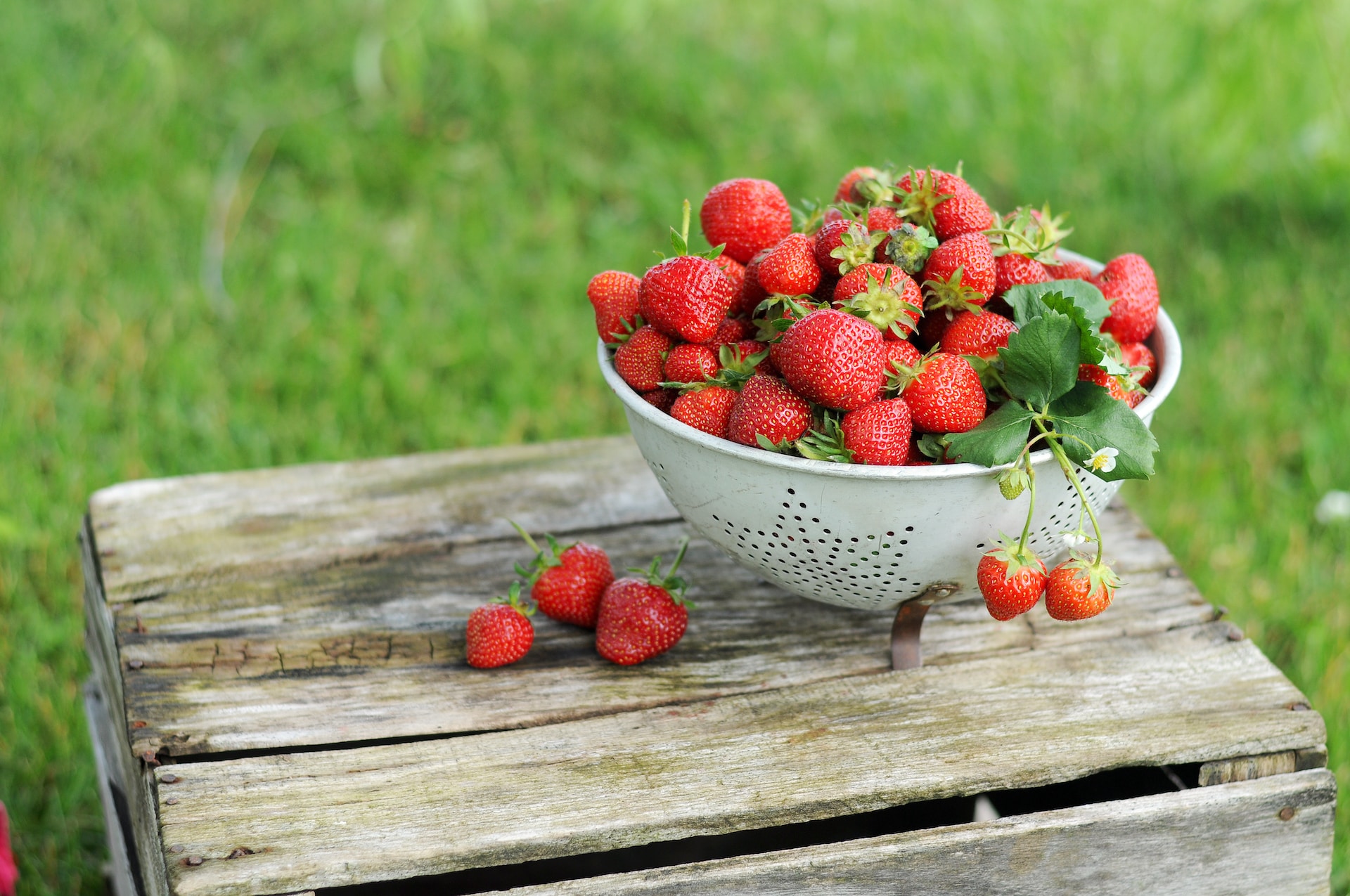
Folic acid – Strawberries also provide folic acid, which is a synthetic form of vitamin B9 and belongs to the B vitamins. Folic acid plays important roles in the body, including neurotransmission, homocysteine metabolism, and red blood cell synthesis.
Pectin – Strawberries have a beneficial effect on intestinal flora due to their pectin content. These ingredients further remove accumulated food debris in the intestines, preventing constipation. Pectins also reduce glucose absorption in the small intestine and lower blood cholesterol levels.
Quercetin – Strawberries are known for their ability to prevent heart disease. This is due to the presence of anthocyanins and quercetin, which have anti-inflammatory properties. Quercetin, specifically found in strawberries, can help lower the risk of atherosclerosis and protect against damage caused by low-density lipoproteins.
Fiber – Strawberries contain small amounts of fiber. Fiber has a very positive effect on the digestive system, but dried fruits, such as prunes or apricots, are better sources than strawberries.
Strawberries are low-calorie fruits, so people on a weight-loss diet can eat them. Strawberries contain the enzyme bromelain, which aids in breaking down food proteins and increasing the metabolism of fats and carbohydrates. This can contribute to weight loss.
Strawberries also have diuretic properties and support kidney function, further aiding in achieving weight loss goals. Additionally, strawberries have a lower glycemic index compared to other fruits, making them an ideal snack for individuals with diabetes.
Strawberries are a great option for those following a ketogenic diet. They are low in sugar and carbohydrates, making them permissible on this eating plan. Additionally, strawberries have very little fat. However, it's important to be cautious when consuming processed strawberry products like slivers or other processed forms, as they may contain added sugar which can increase the overall calorie content.
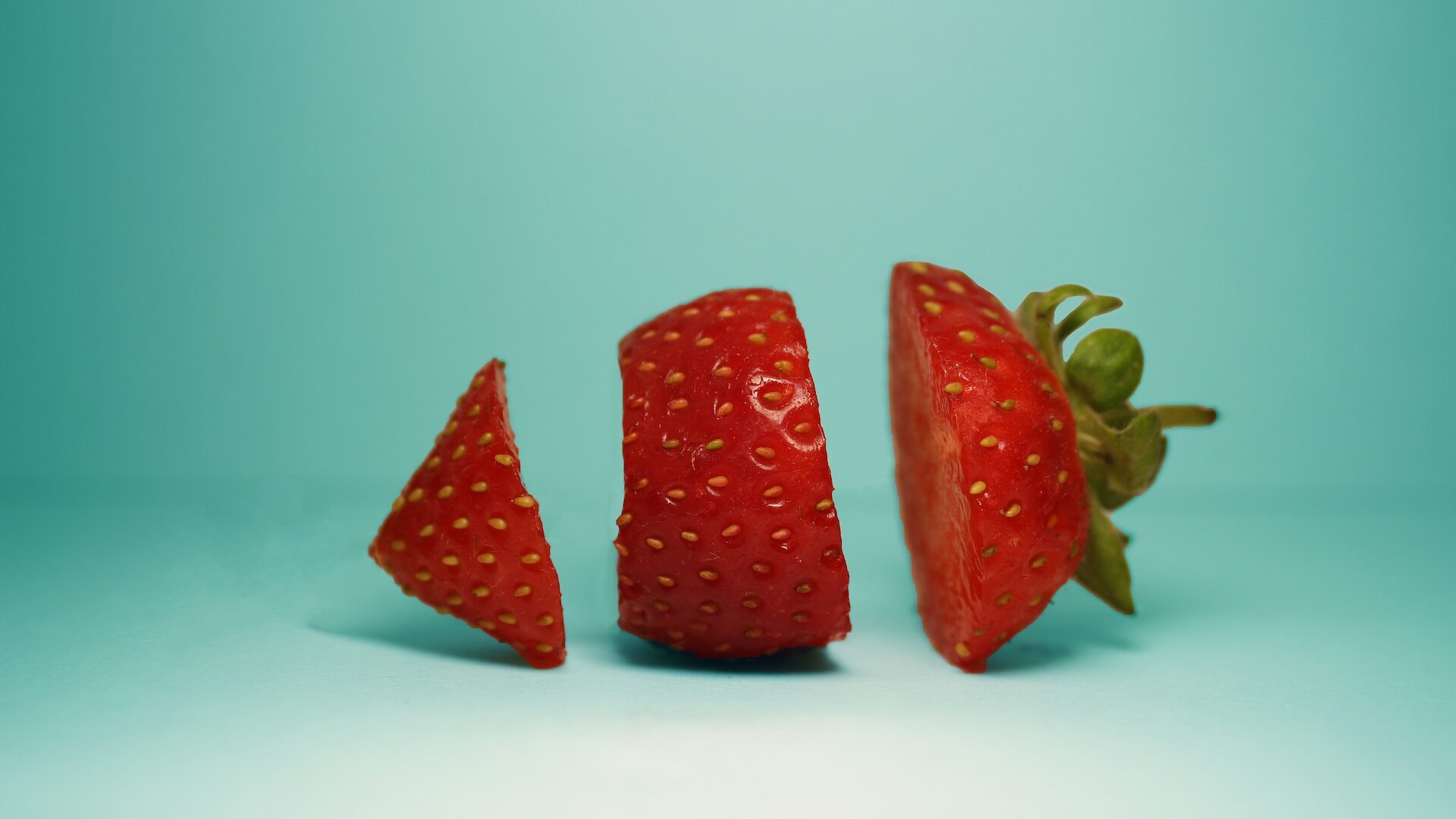
Strawberries offer a multitude of nutritional benefits and properties that contribute to overall health. Some of the general advantages of consuming strawberries include:
Effects on skin health – Strawberries have numerous benefits for skin health due to their high vitamin C content. Vitamin C acts as a potent antioxidant, defending the body against harmful free radicals. Additionally, it plays a crucial role in collagen production, which is essential for maintaining the skin's elasticity. As a result of these properties, strawberries are not only used in culinary applications but also find application in the cosmetics industry. Extracts from strawberries are commonly added to masks and creams. Another popular product derived from strawberries is strawberry seed oil, which is known for its nourishing and moisturizing properties when applied topically on the skin.
Lowering cholesterol – When it comes to lowering cholesterol, strawberries play a vital role. The vitamin C present in strawberries helps in preventing the oxidation of bad cholesterol, thus reducing the risk of atherosclerosis. Additionally, strawberries contribute to sealing blood vessels and increasing the levels of good cholesterol in our bloodstream. Furthermore, research has shown that strawberries also have positive effects on asthma and heart disease management.
Anti-inflammatory effect – Strawberries contain quercetin, a natural compound with anti-inflammatory properties. The antioxidants present in strawberries help reduce markers of inflammation in the body. Consuming strawberries regularly can provide protection against inflammation.
Anticancer effects – Strawberries have additional active substances in their flesh, such as anthocyanins, ellagic acid, quercetin, and kemferol. These compounds contribute to the strawberries' antioxidant properties. Some studies suggest that these fruits may even have anticancer effects by preventing the transformation of cells into cancer cells and neutralizing carcinogenic nitrosamines.
Supporting the digestive system – Strawberries are great for supporting a healthy digestive system. They're packed with fiber and pectin, which help promote smooth and efficient digestion. By aiding in the removal of waste products from the body, they can also reduce the risk of colon and rectal cancers.
Hydration – Strawberries are a fantastic snack option, especially during hot weather, because they have a high water content. To further enhance hydration, you can also enjoy them in compotes, smoothies, or homemade flavored water.
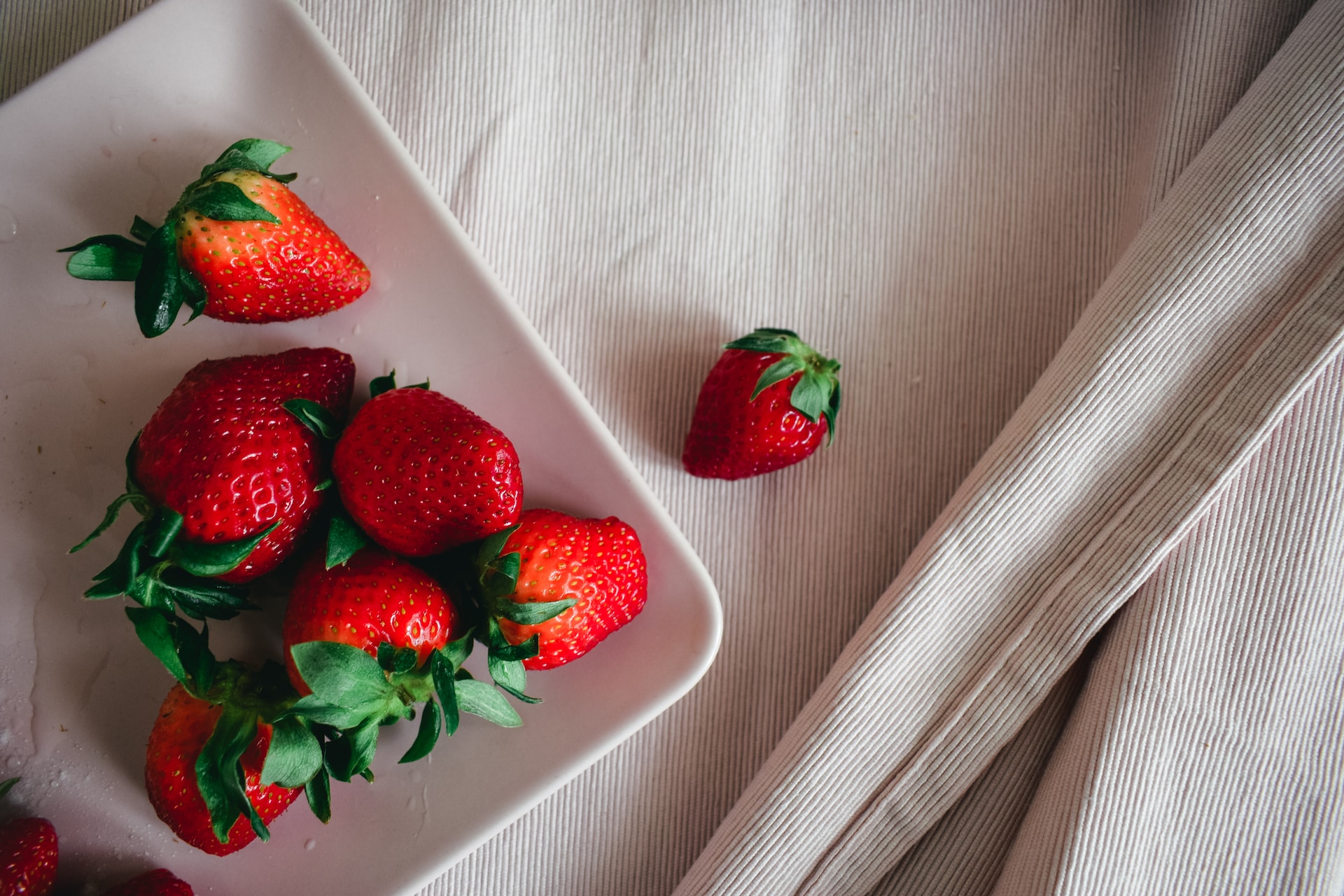
Strawberry festivals are held in various cities in America and on other continents. It is a celebration of strawberries, their admirers, and farmers. It is popular, among others, in Florida's Plant City, where strawberry shortcake has been recognized as Florida's official dessert. The Florida Strawberry Festival celebrates the mid-season strawberry harvest.
The strawberry festival is a week-long celebration filled with music, activities, and delicious strawberry treats. The main highlight of the event is the abundance of booths offering various strawberry products. Visitors can also enjoy contests and games centered around timed eating challenges. For those who have a love for strawberries, this festival is the perfect place to be!

Strawberries are ideal for both direct consumption and processing. The industry processes them into various types of juices, compotes, jams, and frozen foods. The proper way of freezing slightly affects the nutritional value of strawberries, so it is worth choosing them when we do not have access to fresh fruit. In addition, you can find freeze-dried strawberries on store shelves.
Strawberries can be used to make many delicious dishes. Primarily, strawberries are eaten sweet by adding them to desserts. How to use strawberries in the kitchen? Check out what else you can do with these delicious fruits!
Chocolate-covered strawberries can be a sweet snack on their own, for example, at a children's party or as a decoration on a cake. They can be served with champagne or sparkling wine as a sweet ending to a romantic dinner.

Wash and thoroughly dry the strawberries. Break the dark chocolate into cubes, place in a bowl set over a pot of boiling water, add butter or oil, and melt cool slightly—dip strawberries in liquid chocolate, holding them by the tail. Put it on baking paper. After the dark chocolate has set, melt the white chocolate using the same method and pour it into a confectionery sleeve. Decorate the strawberries with delicate strips.
Strawberry cake is a delicious and simple dessert. The cake is very fluffy and moist. It takes little time to make the baked goods. The cake will also work very well with other fruits.

Wash the strawberries and cut them into pieces. Crack eggs into a bowl. Next add sugar and vanilla flavoring. Beat for 10 minutes to a fluffy light cream on the high speed of the mixer. In a mixing bowl, combine the sugar, eggs, and vanilla extract. Mix well until combined. Slowly pour in the oil while continuously mixing. In a separate bowl, whisk together the flour, baking powder, and baking soda until fully combined. Gradually add the flour mixture to the wet ingredients while mixing on low speed.
Once everything is thoroughly combined into a smooth batter, spoon it into a cake pan and arrange strawberries on top. Preheat your oven to 180°C/350°F and bake for approximately 45 minutes or until a toothpick inserted in the center comes out clean. Finally, sprinkle powdered sugar over the finished cake for an added touch of sweetness.
Table of Contents
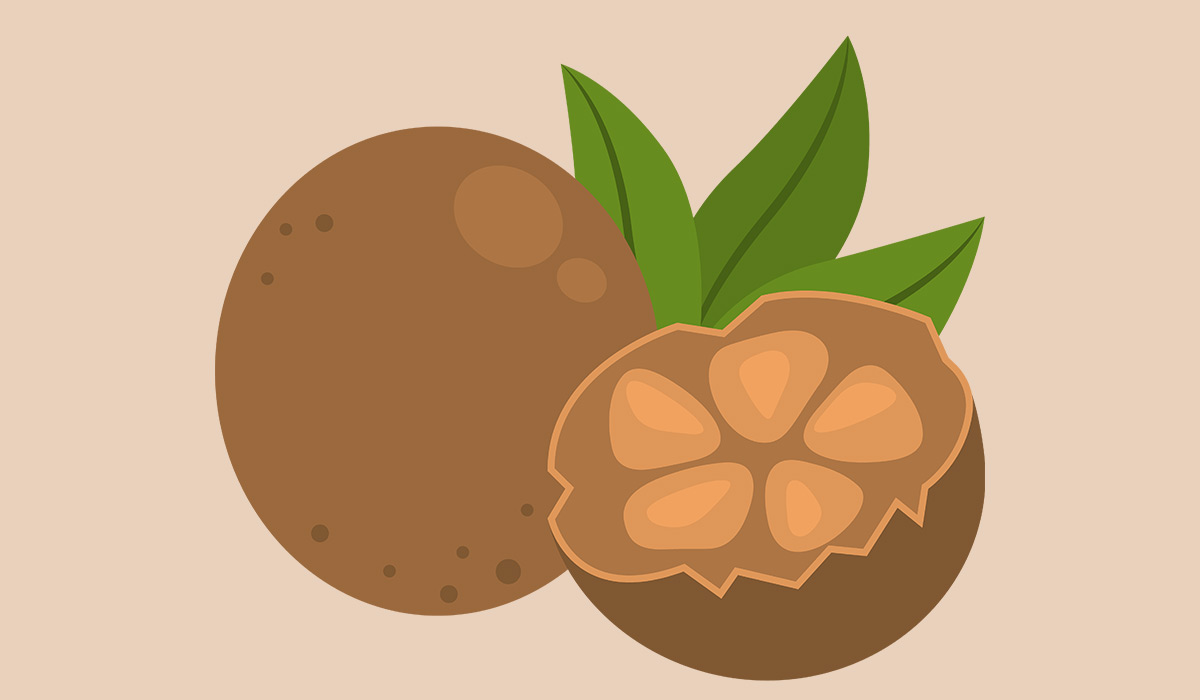

Monk fruit is an extraordinary plant with many health properties. The processed fruit can be used as a substitute for… read more »
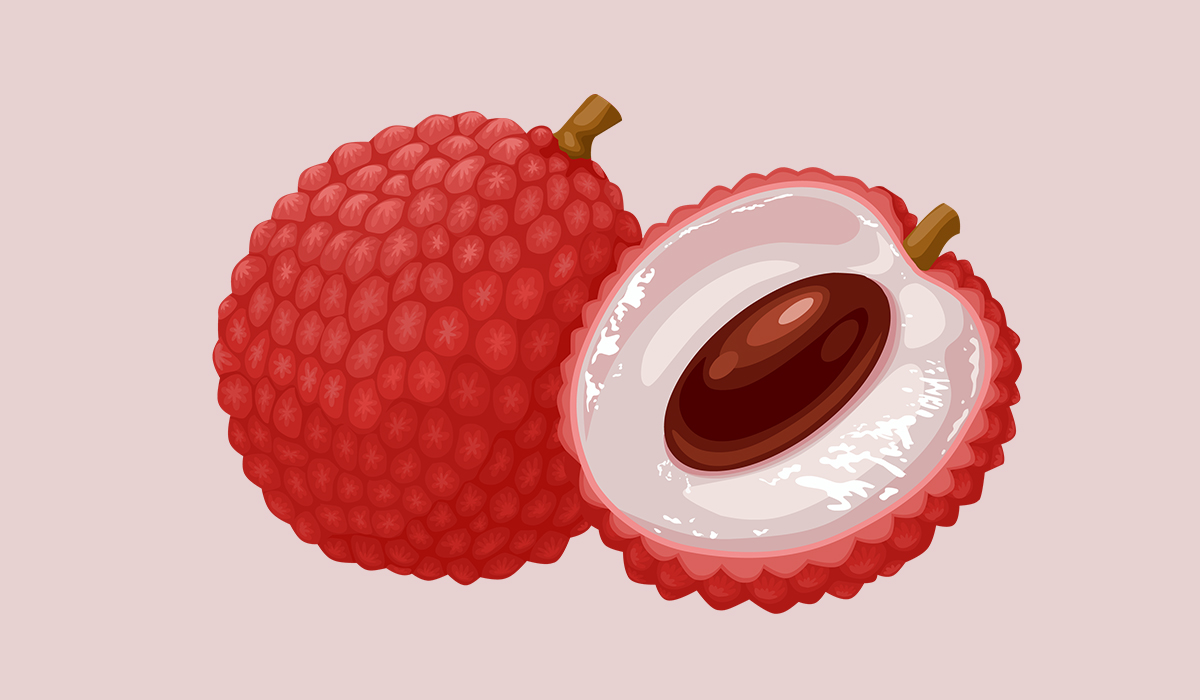

Lychee is a fruit known for its exceptional flavor. Discover the health benefits of incorporating lychee into your diet, and… read more »
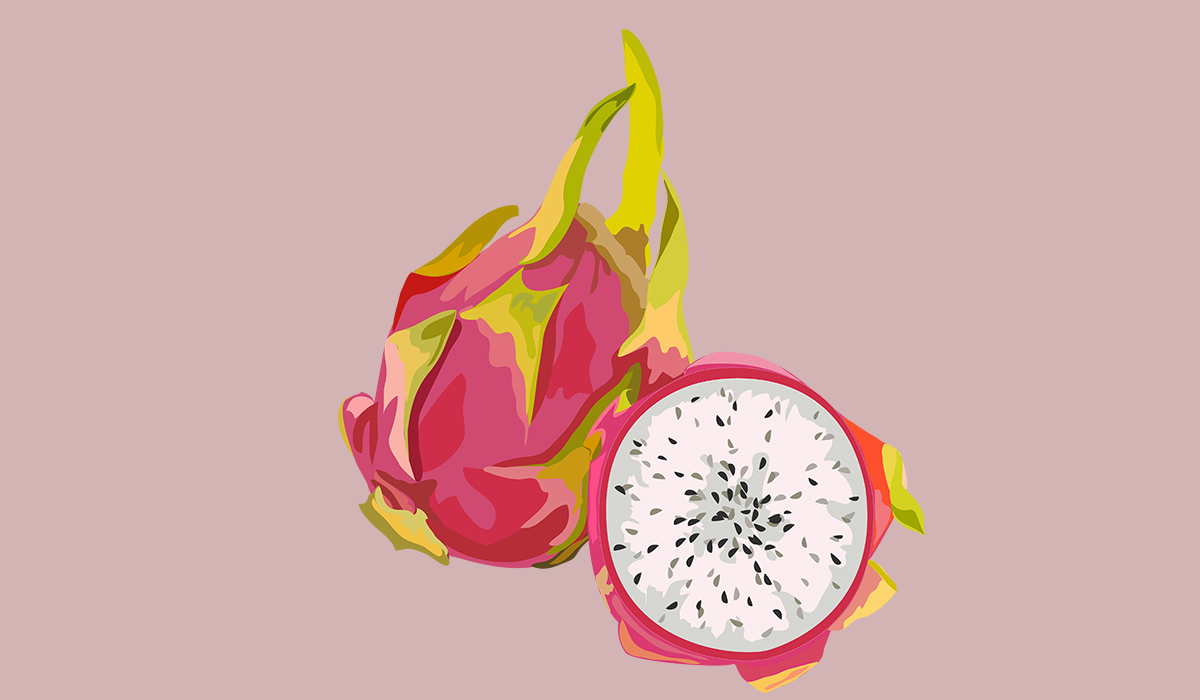

Dragon fruit is an exotic fruit that combines the taste of kiwi, pear, and citrus. It's known for its red… read more »


Bananas are a nutritious and healthy food. Eating bananas can bring many benefits. However, the fruit is high in calories.… read more »
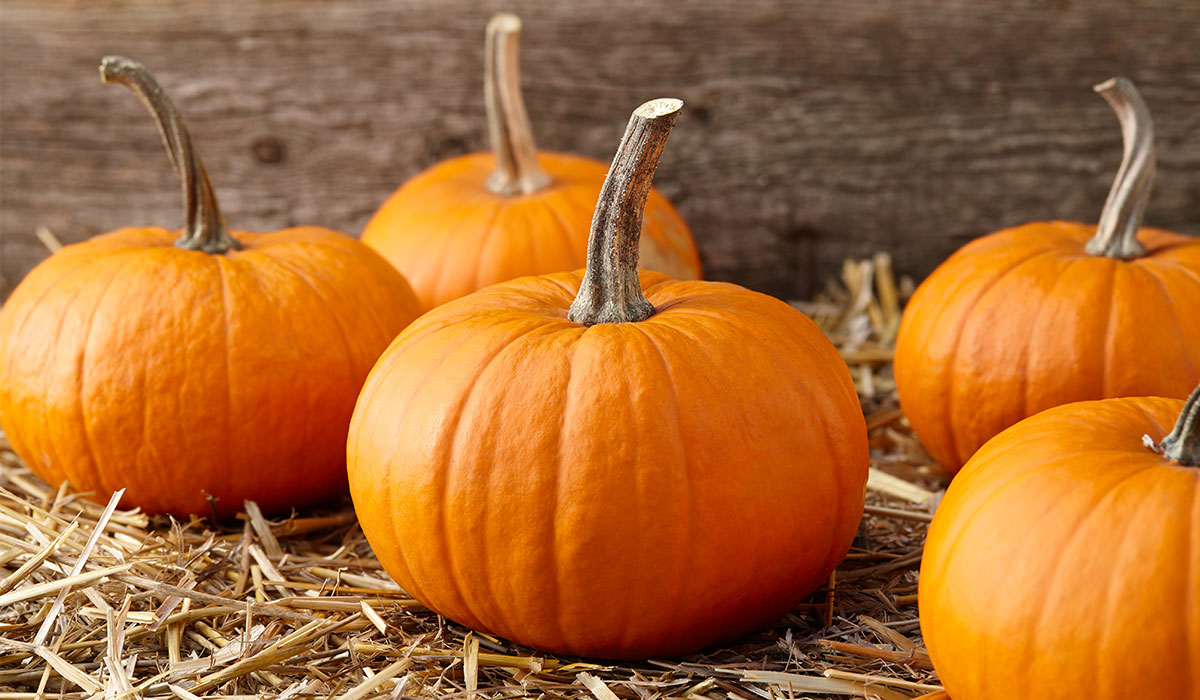

Pumpkin is a popular plant that has benefited people for years. Find out how pumpkin affects health and its calorie… read more »
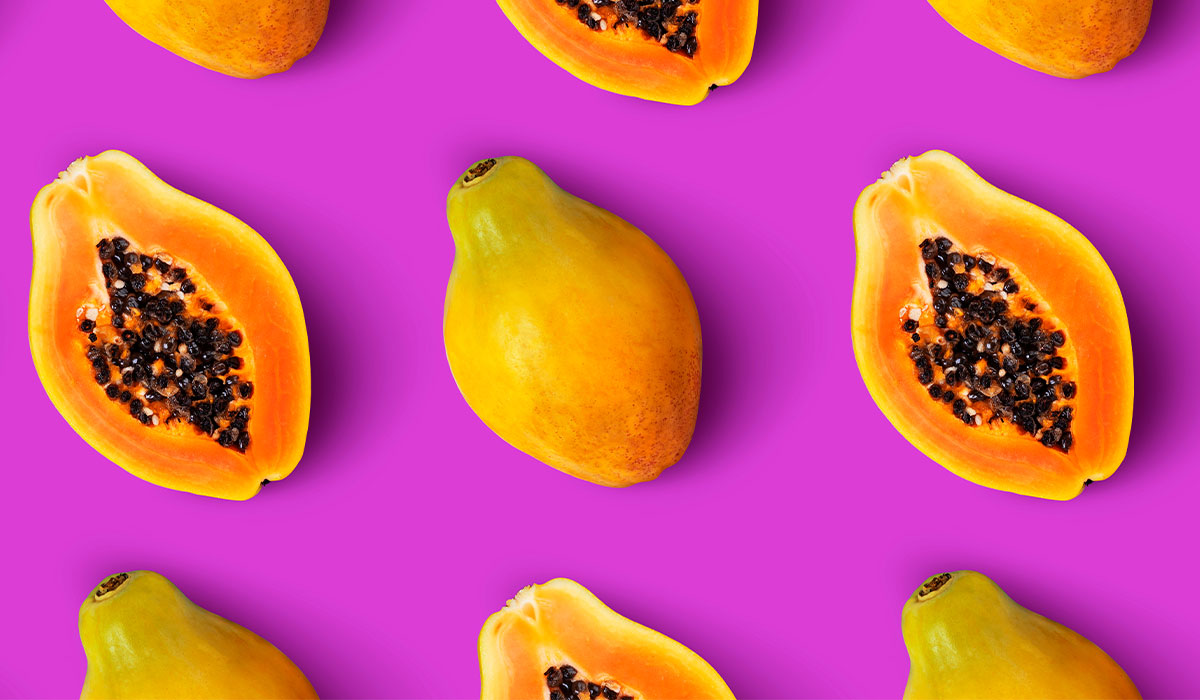

Papaya, a fruit cherished for its flavor and health benefits, offers a variety of culinary options for incorporating it into… read more »
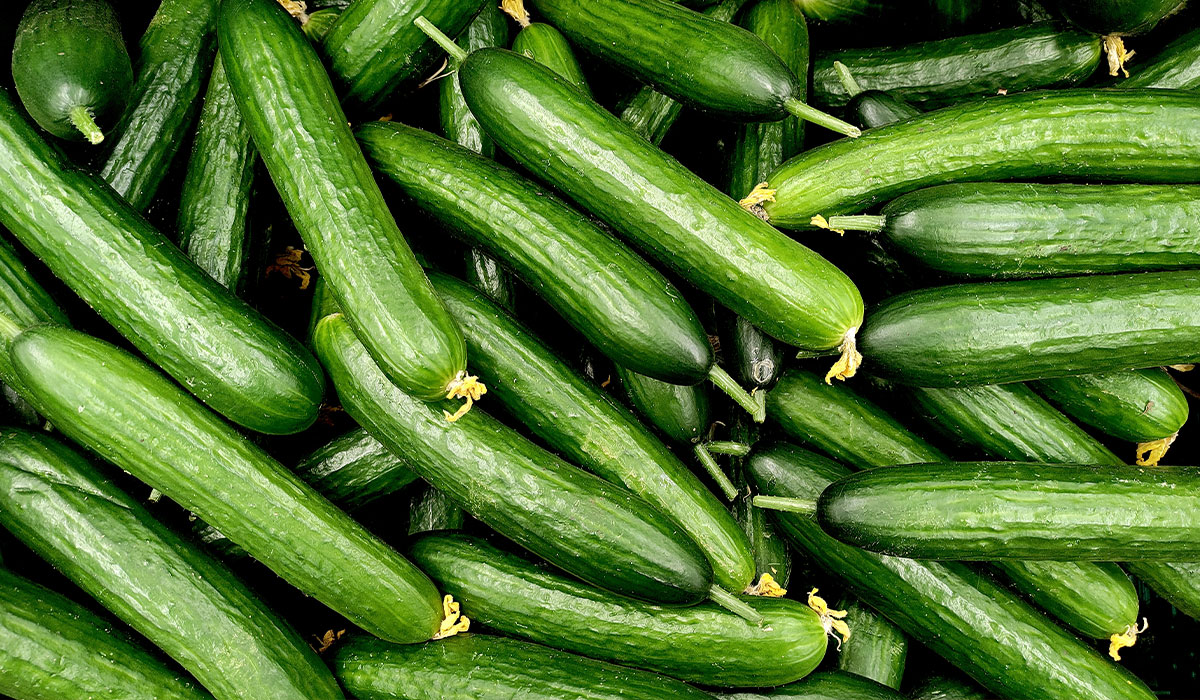

The cucumber is a popular vegetable. If you want to learn about its health effects then read our article. We… read more »


Kawasaki disease is a systemic disease that mainly affects young children and causes inflammation of the walls of blood vessels.… read more »
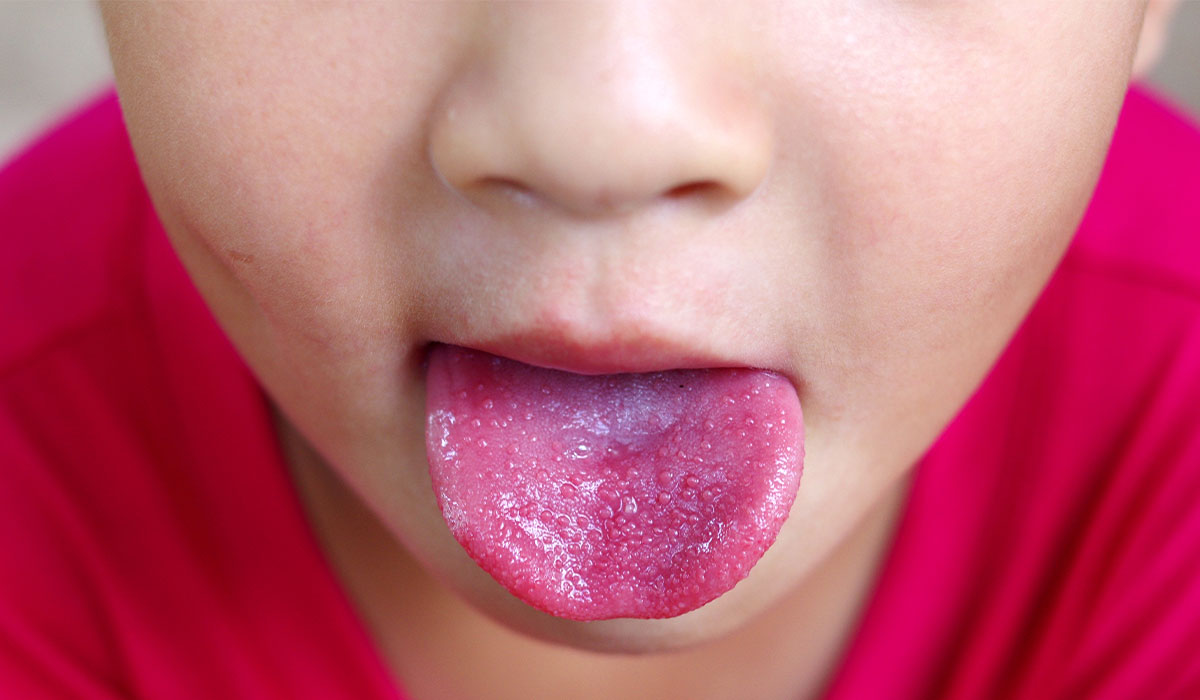

Scarlet fever is an infectious disease caused by bacteria. Infection most often occurs through droplets or contact with contaminated objects.… read more »